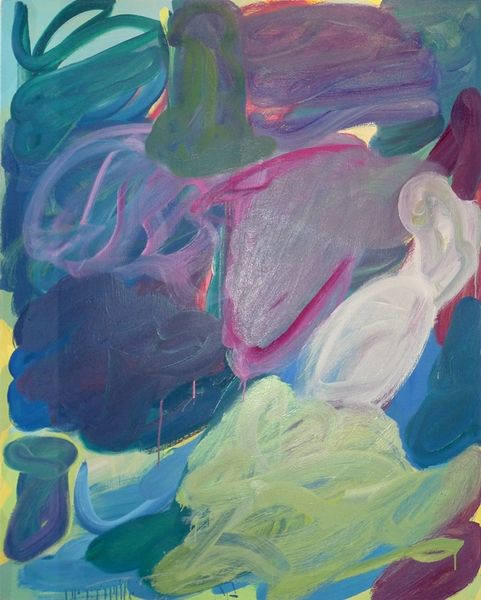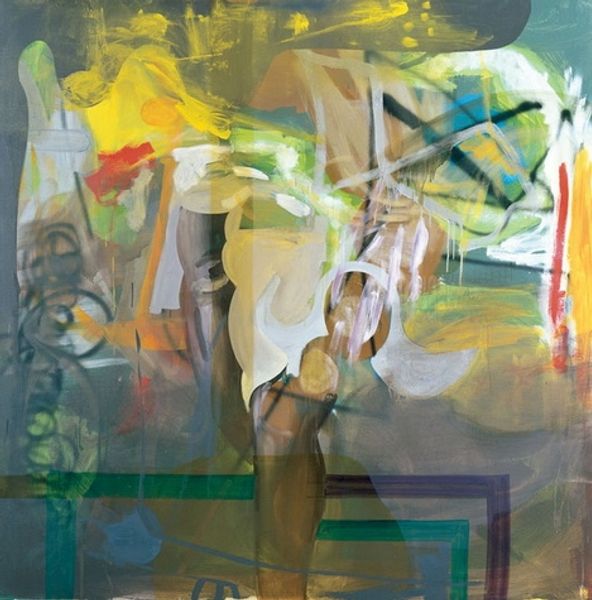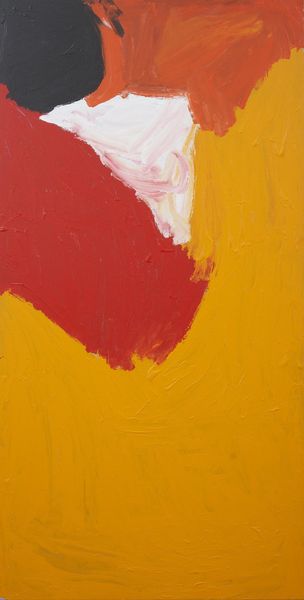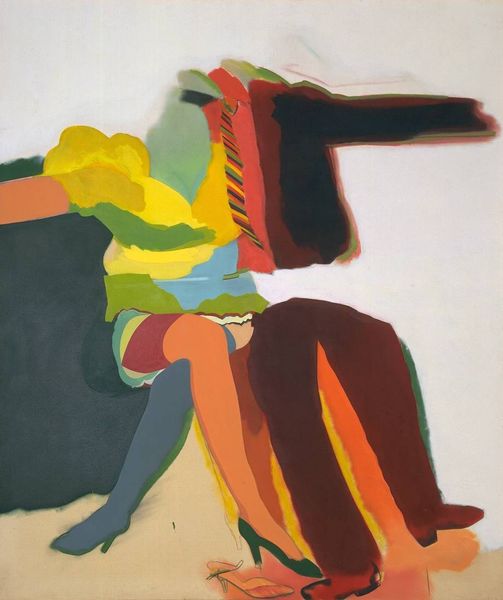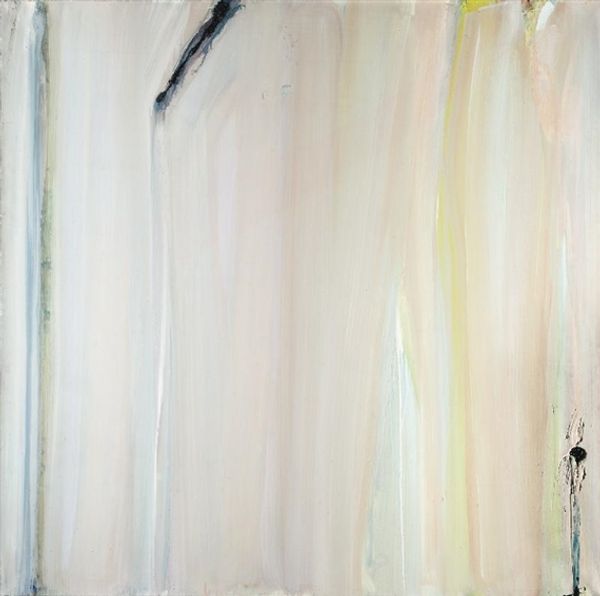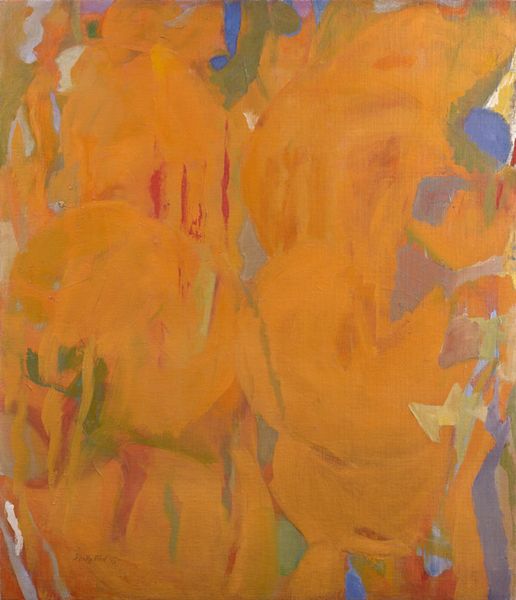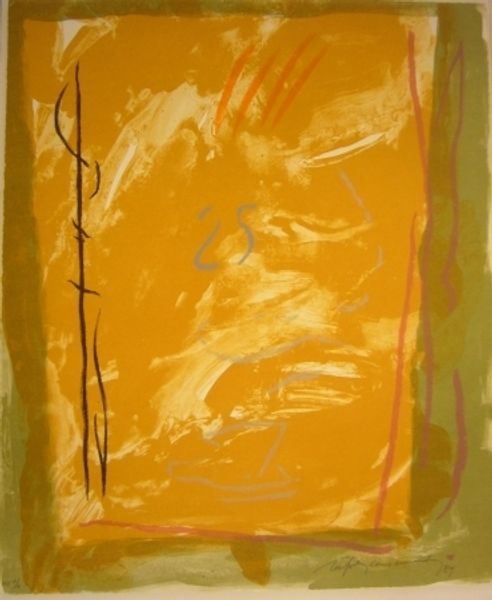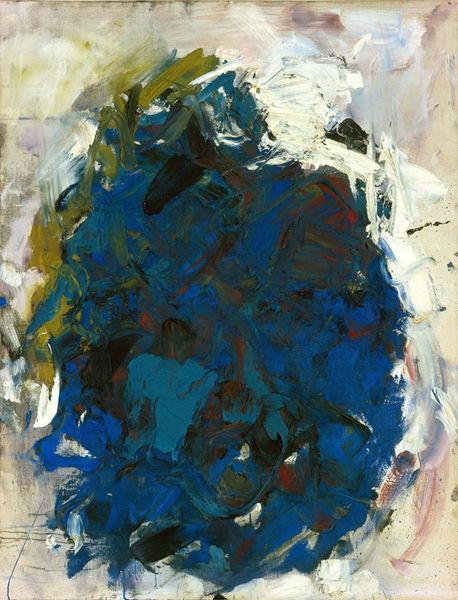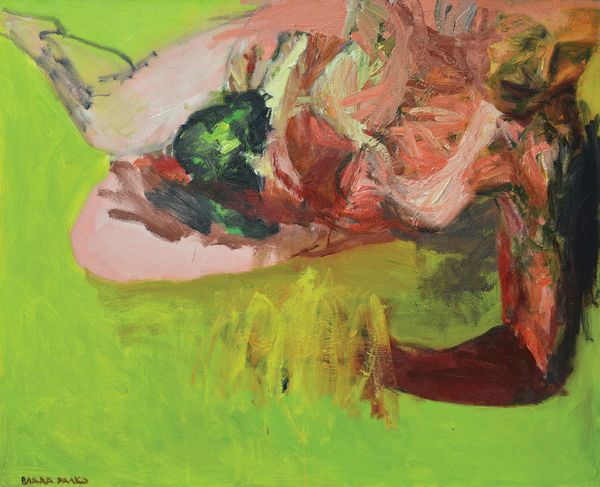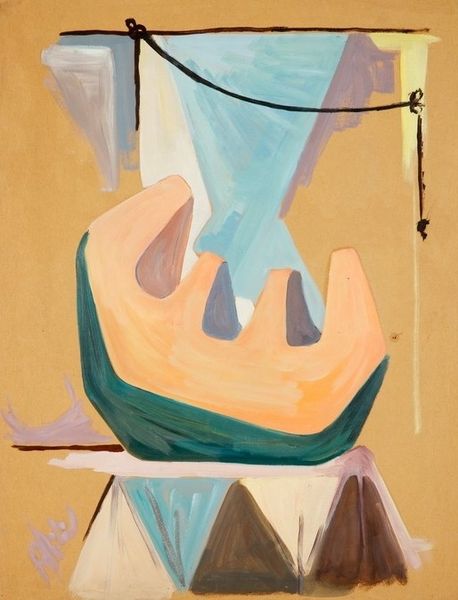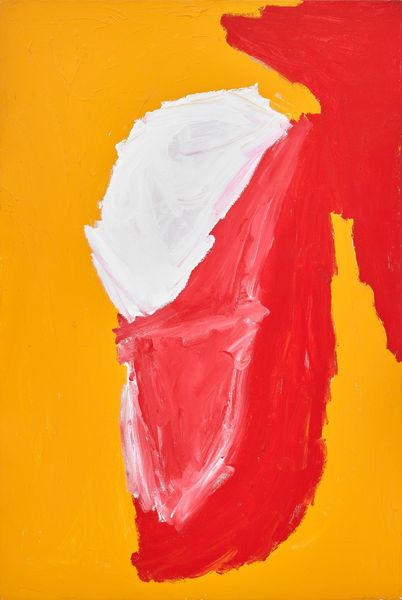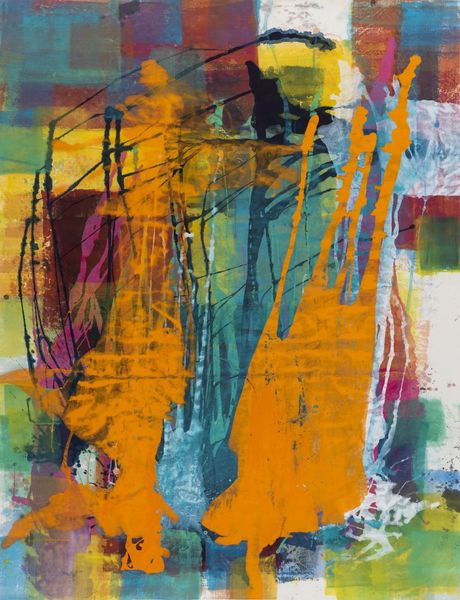
Copyright: Paul Guiragossian,Fair Use
Curator: Here we have "The Fruit Seller" painted in 1972 by Paul Guiragossian, rendered in oil on canvas. What strikes you initially about it? Editor: I feel immediately enveloped by a sense of cloistered warmth. It's fascinating—the near-absence of detail seems to amplify the painting’s emotional volume, like a memory played on repeat in an empty room. Curator: It’s tempting to read a multitude of cultural echoes in Guiragossian’s piece. The veiled figures, for example, may invite associations with religious iconography or societal customs regarding women. What persistent symbolic themes surface for you? Editor: Hmm, thinking aloud now…it could be about bearing burdens. I see these shrouded figures, bent slightly. They're each carrying some weight, tangible or invisible. I am intrigued to wonder whether they're crushed or dignified by it. There’s a curious ambivalence in those strokes, wouldn’t you agree? Curator: I'm not sure if the symbolism of bearing burden works so well for me. To me, the shrouds symbolize the weight of history and tradition, specifically those prevalent in the Eastern Mediterranean region. There's an interesting dance between individual experience and communal identity being portrayed in those brushstrokes. Editor: Ah, now that you mention it, it shifts into something a tad bit more melancholic for me! Are they confined by those traditions, or do they find a certain solace, a cultural cocoon, in those constraints? It’s an odd kind of tender tension isn’t it? I feel both. Curator: Precisely. Guiragossian uses this modernist Expressionist style to convey both universal human emotions and his own cultural background—perhaps bridging the gap between individual struggle and communal belonging, particularly during a time of political turbulence in his native Lebanon. Editor: It definitely stirs up more questions than it answers, doesn’t it? Which I suppose is precisely why it keeps us thinking all these years later. Curator: Absolutely. I think that’s what makes "The Fruit Seller" a potent reminder of our shared, though uniquely interpreted, humanity. Editor: And for me, I think this artwork has made me question whether comfort or complacency springs from the familiar and repetitive customs that we choose.
Comments
No comments
Be the first to comment and join the conversation on the ultimate creative platform.
